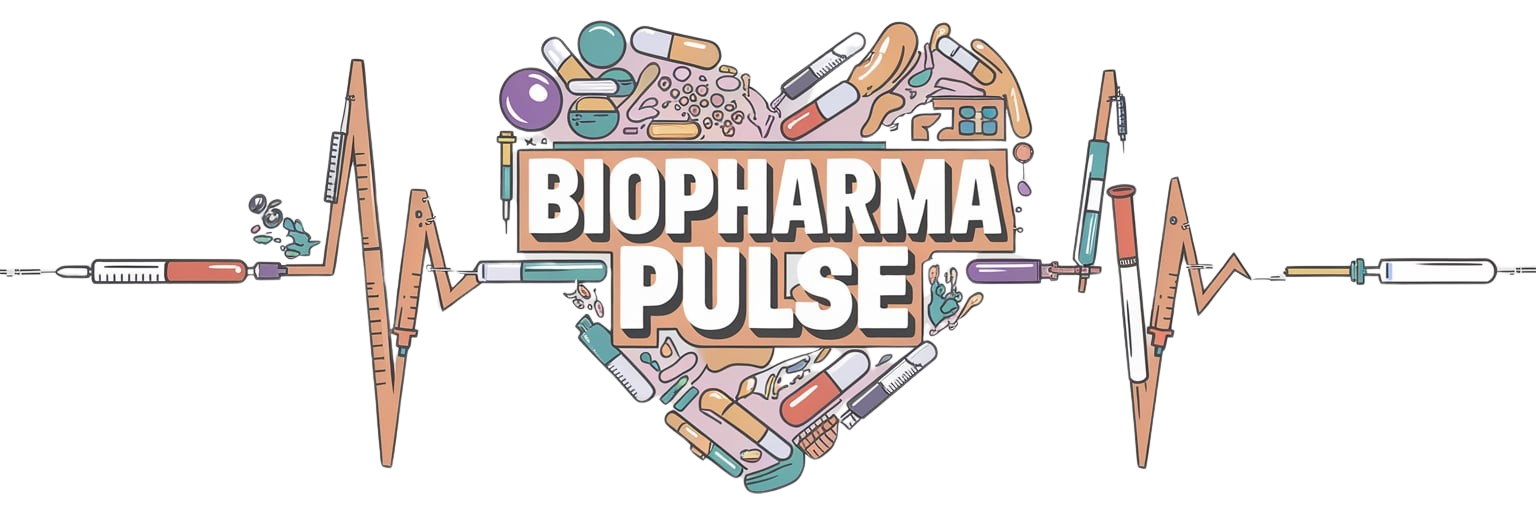Greetings, BioPharmaPulse Readers!
Welcome to another insightful edition of BioPharmaPulse. In today's rapidly evolving biopharmaceutical landscape, staying informed is key. Let's delve into the latest developments shaping our industry.
What's in this issue:
- 🔬 Otsuka's breakthrough in kidney disease treatment
- 👀 Potential eye risks linked to popular diabetes drugs
- 🤖 MIT's innovative AI model transforming drug discovery
- 🧬 FDA's approach to gene therapy regulations
Inspiration of the Day
"Innovation is the unrelenting drive to break the status quo and develop anew where few have dared to go." – Steven Jeffes
Latest Developments
🔬 Otsuka's Kidney Disease Drug Halves Protein Levels in Phase 3 Study (1 minute read)

Rundown: Otsuka Pharmaceutical announced promising results from their Phase 3 trial of sibeprenlimab, a treatment for IgA nephropathy, an autoimmune kidney disease. The drug reduced proteinuria levels by over 50% after nine months, significantly outperforming placebo and a competing therapy from Vera Therapeutics.
Key Points:
- 🏆 Achieved a 50.2% reduction in proteinuria levels.
- 📊 Outperformed competitor's results presented earlier.
- 👍 Low incidence of serious side effects (3.9%).
- 💉 Potential new therapy for IgA nephropathy patients.
Why it matters: IgA nephropathy leads to kidney failure for many patients worldwide. Sibeprenlimab's success offers hope for an effective treatment, potentially improving quality of life and health outcomes for those affected.
👁️ Study Links GLP-1 Drugs to Increased Risk of Serious Eye Disease (1 minute read)

Rundown: A recent study suggests that diabetes patients using GLP-1 receptor agonists may face a higher risk of developing neovascular age-related macular degeneration (nAMD), a serious eye condition that can lead to blindness.
Key Points:
- 👀 GLP-1 users were twice as likely to develop nAMD.
- 📈 Incidence was 0.2% in users vs. 0.1% in non-users after one year.
- 🩺 Study involved nearly 140,000 Canadian patients.
- 🔎 Adds to concerns about GLP-1 medications and eye health.
Why it matters: As GLP-1 drugs are widely prescribed for diabetes and weight management, understanding potential side effects is crucial. This insight emphasizes the need for regular eye examinations and monitoring for patients on these medications.
🤖 MIT Scientists Debut AI Model Boltz-2 for Drug Binding Prediction (1 minute read)

Rundown: A team of MIT scientists has introduced Boltz-2, a new AI model that predicts drug binding affinities—a critical factor in drug development. This model overcomes previous limitations, potentially accelerating the discovery of effective new drugs.
Key Points:
- 💡 Boltz-2 enhances prediction accuracy in drug binding.
- 🚀 Could significantly speed up drug discovery processes.
- 🔬 Addresses challenges that hindered prior AI methods.
- 🧪 May lead to more efficient therapeutic development.
Why it matters: Accurate prediction of binding affinities is vital in creating effective medications. Boltz-2's advanced capabilities could streamline drug development, reducing time and costs, and bringing new treatments to patients faster.
Question of the Day
🤔 How do you think AI advancements like Boltz-2 will impact drug discovery?
- They will revolutionize the process
- They will help but won't be game-changers
- I'm skeptical about significant impact
Trending News
🧬 FDA Open to Relaxed Regulations on Rare Disease Gene Therapy
- The FDA signaled a willingness to consider more flexible approval pathways for rare disease gene therapies, aiming to expedite treatments for unmet medical needs.
👁️ EMA Considers Eye Condition a 'Very Rare' Side Effect of Semaglutide
- The European Medicines Agency recommends updating labels for Ozempic and Wegovy to include a serious eye condition as a very rare side effect, enhancing patient safety information.
💰 Kelun Biotech Upsizes PIPE to $250M
- Kelun Biotech successfully raised $250 million in a private investment, attracting global investors and signaling strong confidence in its pipeline.
Industry Insight
🔎 Navigating Gene Therapy's Regulatory Landscape
Gene therapy holds promise for treating a range of genetic conditions but faces significant regulatory hurdles. Recent discussions by the FDA suggest a move toward more flexible approaches, especially for rare diseases.
Understanding these regulatory shifts is crucial for biopharma companies. Adapting to new guidelines can accelerate development timelines, bringing innovative therapies to patients who need them most.
Quick Hits
🧪 GSK Appoints Sanjay Gurunathan to Lead Vaccine R&D (1 minute read)
- GSK strengthens its leadership by naming Sanjay Gurunathan, formerly of Sanofi, as the global head of vaccines and infectious disease R&D.
💼 Protara Adds Industry Veteran as Chief Commercial Officer (1 minute read)
- Protara Therapeutics hires Bill Conkling to prepare for its transition to a commercial-stage company, leveraging his two decades of experience.
🧬 TegMine Acquires ADC Technology from OBI Pharma (1 minute read)
- TegMine Therapeutics secures rights to antibody-drug conjugate technology, advancing efforts to develop targeted cancer treatments.
🌍 Puerto Rico: A Smart Choice for Bioscience Reshoring (1 minute read)
- Amid global trade uncertainties, bioscience companies consider Puerto Rico for its favorable conditions for reshoring manufacturing and research.
🔄 Biotechs Reevaluate Reverse Mergers in 2025 (1 minute read)
- The appeal of reverse mergers wanes as biotech firms seek alternative routes amid changing market dynamics.
Wrap Up
Thank you for joining us in this edition of BioPharmaPulse. The biopharmaceutical world is ever-evolving, and staying updated is essential. We hope these insights inspire your work and fuel your passion for innovation.
Feel free to share this newsletter with colleagues and friends who share our enthusiasm. Together, we can keep the pulse of biopharma strong.
Until next time,
Elliot Reeves
BioPharmaPulse
💬 How did you like today's email?
- 😄 Loved it
- 🙂 It was OK
- 😕 Could be better
